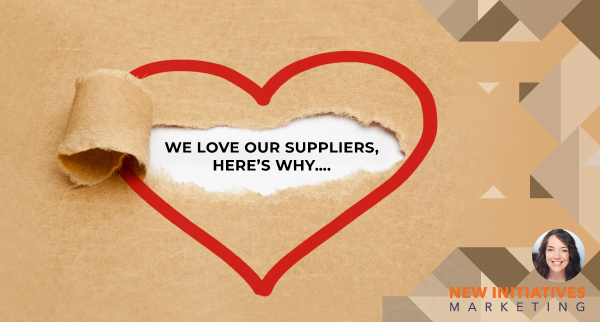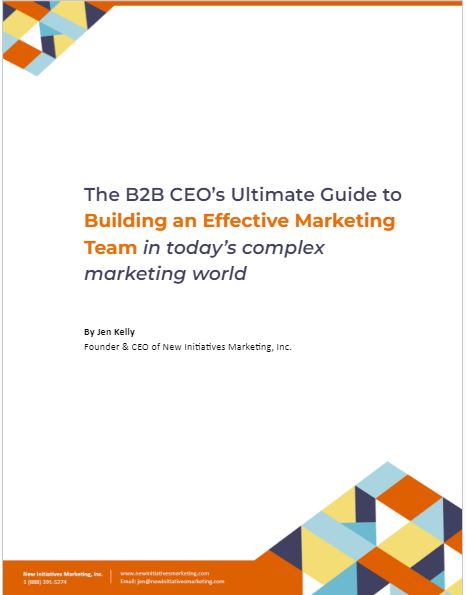Marketing Strategy: The results of your customer interviews will be their answers, feedback, and opinions on what you do well, should do better, and why they value doing business with your company. Taking this information to heart, and adjusting your messaging to reflect what your customers have shared with you, will result in clear messaging about what your company does and how you’re different from the competition.
If I asked you to tell me the difference between your company and your closest competitor, the one who drives you nuts, would you be able to clearly articulate your difference?
If not, you’re not alone.
Customer interviews may be the process that can help you better articulate your company’s differences.
A customer interview is not the same thing as a testimonial or an online review. A customer interview is more than “can you leave us a Google review or post in our business community about the fantastic job we did for you?” While customer reviews and testimonials are important, customer interviews are a different thing, and valuable to your company in a different way.
WHAT ARE CUSTOMER INTERVIEWS?
They are pre-arranged 15-20 minute interviews over the phone or video call, conducted by a third-party with the goal of understanding why your customers stay with you, what problems you solve for them, what you do well, what you don’t do well and what you don’t do that they wish you’d do for them.
WHY DO CUSTOMER INTERVIEWS?
From my experience of doing customer interviews for clients since 2015, and reading through hundreds of customer transcripts, I can tell you that what you think you do well for your clients isn’t the same thing as what they think you do well.
Sure what you think you do well might be the number 2 or number 3 thing on their list…but their number one thing often is your way of doing business that they value rather than what you do for them.
And this way of doing business is your difference. Take what they say is valuable to them about your business, and use that in your messaging. Instead of sounding like everyone else, you’ll sound different and ideal to other potential customers.
Because most companies are not taking the time to do these customer interviews, they are not able to articulate their real difference. Instead they put together taglines and explanations of their products and services that they think are of value to the customer. This is why you see tag lines and explanations of what similar companies do, that all sound the same.
If your company and your competition describe your products and services in a similar way…you seem like the same thing to your potential customer. How are they supposed to tell the difference between all of you? They can’t, and so they’ll shop on price. And from there it is an uncomfortable race to the bottom.
Read about the value of customer interviews in the following case study. It’ll help you to understand how customer interviews can help your company find the things that matter to your customers and then be able to articulate those differences to help you stand apart from your competition.
BEFORE AND AFTER: A CASE STUDY
This is a famous case study* of an architectural firm who used customer interviews as part of their work on their company marketing strategy.
The company is an architectural firm specializing in building office towers. Let’s call them Smith & Co. They thought they did beautiful work and ensured that they were paying attention to sustainability and environmental concerns with their designs. If you asked them, this is what they said was their difference “we are architects that design beautiful buildings.”
Smith & Co. were in competition with other architectural firms who said the same thing about themselves…they built beautiful buildings and ensured their designs were environmentally friendly. You can start to see how if all the firms are saying the same thing…what is Smith & Co.’s difference?
Smith & Co. started with the customer interviews. What they found was quite stunning. Sure their customers (their customers are the developers contractors) thought their designs were good and appreciated the care about sustainability and being environmentally friendly. However, this was not why they liked doing business with the company.
The contractors liked doing business with this firm as they were able to get approvals through city hall quickly, therefore being able to break ground and start on the project in a timely fashion. In this line of work, contractors get paid as soon as the building work starts. This meant the contractors would get paid faster than if there were delays with approvals at city hall, which was typical with most other architectural firms’ work.
Smith & Co. was stunned to hear this. Having the approvals and paperwork in order to help get through city hall quickly was just an efficient way to do business, they thought. Nothing special about that…or was there?
Upon further digging (pun intended) Smith & Co. found out that a huge hassle for their customers were the delays with getting paperwork through city hall. Delays meant work didn’t start. Delays meant revenue was delayed. Less delay meant more business and more revenue for their customers.
Smith & Co. worked with their third-party marketing company to articulate this valuable difference in the way they talked about their firm. The result was a clear difference that attracted more of their ideal clients to them directly without competing against “same” architects.
Old messaging:
We build beautiful office towers that are environmentally friendly
New Messaging:
We help contractors get paid faster. Our zoning adjustment compliance system process gets plans approved quickly by city hall so you can start your work faster and get paid promptly.
Old difference (they thought this was their difference):
We are architects that build beautiful buildings
New difference:
We are the Contractor’s Architect
The result being that now they separated themselves from all the other architects their potential customers could choose from because let’s be real, what architect would say they built awful-looking buildings??
Smith & Co. articulated their difference, they know they can stand behind their difference because this is how they were operating before they knew their customers valued this process so much. Now they are using their difference to clearly communicate with their customers about why they are different.
And leading with what is important to their customers (get paid faster) rather than what was important to them (designer of beautiful buildings) made all the difference.
HOW DO CUSTOMER INTERVIEWS WORK?
Before embarking on the customer interview process, which can take weeks to coordinate, you’d have to be convinced that your company needs to better articulate its difference.
Frankly, there is no point in going through this work if you are not focused on the importance of expressing your company’s difference in order to attract your best and ideal customers.
If you’re not in this pain, spend your time and budget on other marketing activities.
If you are in this pain, you’d benefit from the customer interview process. Here are our recommended best practices for this work.
- Choose five or more of your customers to interview. Contact them to ask them if they would be willing to be part of this work for your company. There is nothing they need to prepare for, just be ready for the call and to answer some questions about the experience of doing business with your company. Upon confirmation, let them know you’ll advise on the next steps shortly.
- Get a trusted third-party to interview your customers. Why? Beyond there being a human ability to spill our guts to third parties, and therefore get more candid answers about their experience working with you, you already have a business to run. Let an experienced third-party work on this area of your business for you. This is quite a time-consuming process and deserves the full attention and energy of a dedicated team.
- Introduce the third-party and your customers. This can be done via email. Now the third party and customer can take it from there. Typically the coordination of a good date/time to have the interview will come next. Be sure to advise the customer that the call will be recorded.
- Let the third-party do the work. Depending on the number of customers being interviewed and the schedules of your customers, finding an ideal date and time for this interview may be further out in the future than you’d like. Ensure the third-party keeps you up-to-date on progress.
- Once the third-party has all the interviews completed. They’ll review the transcripts. Together with an understanding of what your company does and what value your customers have articulated, the third party will start to pull common themes out of the conversations.
- The third-party will then present the results to you. This will include the pros and the cons your customers have mentioned in the interviews. The third-party will have also pulled together unique messaging they’ll recommend as a result of these interviews. Review and decide on the messaging. Bask in the compliments and review the critical feedback to see if there are ways to improve the work you do. Even though criticism hurts, your customers have taken the time to advise on what they think you can do better. Take this as the servious and valuable gift that it is.
- Your messaging work is now complete. Messaging is a key part of your company’s marketing strategy. Be sure to update your company’s marketing messaging documents for use with writers and content creators so they can create on-brand content. Update your website, tag line, about us page, profiles, bios, and product/service messaging.
- You now have clear, unique messaging that speaks to what and how your company is different. If I asked you to now tell me the difference between your company and your closest competitor, the one who drives you nuts, you can now clearly articulate your difference. And now, your ideal customer understands that what you offer is what they need. You’re their clear choice.
Jen Kelly runs New Initiatives Marketing (NIM), the marketing team for companies who don’t have a marketing team. With marketing implementation and execution as NIM’s focus, we’ve been working world-wide remotely since 2009. NIM has supported marketing strategy execution in companies as large as the Fortune 50 and those as small (but growing) as $2M in annual revenue. *case study courtesy of Duct Tape Marketing Consultants Network


